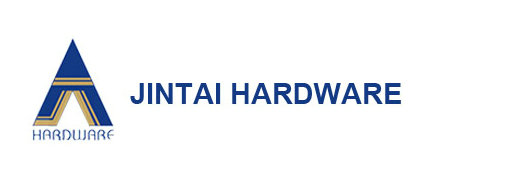Flat
washers are usually thin pieces of various shapes to reduce friction,
prevent leaks, isolate, prevent loosening, or distribute pressure. Aluminium-tin
alloy bearings in many materials and structures have this type of
component to perform a variety of similar functions. The flat washer is limited by the material and process of the
threaded fastener, and the bearing surface of the fastener such as the
bolt is not large, so the compressive stress of the bronze-based bearing
to reduce the pressure surface protects the surface of the connected
member, and the washer is used.
In order to prevent loosening of the connection pair, loose-proof
spring washers and multi-tooth locking washers, round nut stop washers,
and saddle-shaped, corrugated, tapered elastic washers are used.
Flat washers are mainly used to reduce the pressure. When some parts
are tightened with large axial forces, the washers are easily pressed
into a dish shape. In this case, materials can be used and the hardness
can be increased to solve the problem.
The
locking effect of the spring washer is general, and the important part
of the thrust washer position is used as little or as little as
possible, and the self-locking structure is adopted. For
spring washers used for high-speed tightening (pneumatic or electric),
it is best to use surface-phosphorized washers to improve their
anti-friction performance, otherwise they may be easily heated and
burned, burned or opened, and even damage the surface of the connected
parts. Spring washer structures should not be used for thin plate connections. According to statistics, spring washers are used less and less in cars.
The tooth shape of the connection in the toothed elastic washers is
used in the automotive industry due to the large and uniform locking
force, while the spacing toothing is less.
For spring washers and spring washers, according to the national
standard, 60, 70 and 65 Mn steels in GB699-1999 "Quality Carbon
Structural Steel" are generally selected.
There
are 9 flat washer standards in China, which were approved for release
from 2000 to 2002 GB/T 97.3-2000, GB/T 5286-2001, GB/T95-2002, GB/T
96.1-2002, GB/T 96.2 -2002, GB/T97.1-2002, GB/T97.2-2002, GB/T97.4-2002 and GB/T5287-2002 flat gasket standards.
According to flat washer performance level, recommended materials are used:
For the 100HV class available with ST12, ST13 and Q235, Q215, Q195, etc., the surface hardness can reach about 110HV;
For 140HV grades available with 08F, 08Al and 10, 10F, etc., the surface hardness can reach 140HV;
For the 200HV and 300HV grades, 45, 50, 60, 70 or 65Mn steels should
be used. They can be quenched and tempered by heat treatment to
200-300HV and 300-400HV technical requirements.
Due to the standard, 100 HV, 140 HV class flat washers can be made of mild steel. Most of the general enterprises use Baosteel materials when selecting materials, which facilitates cold stamping. The Q/BQB403-2003 Baosteel standard is briefly described below.
There are major changes in the "Cold Rolled Low Carbon Steel Plate and
Strip" and Q/BQB403-2003 corporate standards compared to the
BZJ407-1999 standard:
(1) The brand number was modified and integrated. There are 8 commonly used brands and 5 integrated products. St12 changed to DC01; ST13 to DC03; St14, St15 to DC04; BSC2 to DC05; St16, St14-T, BSC3 to DC06.
(2) The surface quality level was modified from two to three:
Higher grade finishing surface (FB), the surface allows a small number
of defects that do not affect the formability and coating, plating
adhesion, such as minor scratches, indentation, pitting, roller printing
and oxidation color.
The better of the two sides of the Advanced Finishing (FC) product has
no visible defects on the naked eye and the other side must meet at
least the requirements of the FB.
The better side of the super-finished surface (FD) product must have
no imperfections, ie it must not affect the appearance quality after
painting or the appearance quality after electroplating. On the other
hand, it must meet at least the requirements of FB.
(3) The surface structure was modified from four to two, and the control value of the surface roughness was increased. The average roughness Ra when the surface structure was a matte surface (D) was 0.6 μm.
(4)
The provisions for Si and residual elements in the chemical composition
of the five grades were eliminated, and the contents of elements such
as C, S, and Alt were modified.
CATEGORIES
Latest news
- Ferrofluid Vacuum Feedthrough Seals us
- Which one is wear-resistant, steel sle
- Bimetal Flange Bush Bearing
- Selection standard for dimension refer
- Red color ptfe bushing
- Pipe-Mounted Ball Transfer
Contact us
- ADD: No.503,Hunan International Commerce Center, Jintai Square,Changsha 410001,Hunan.
- TEL: +86 731 84770165
- FAX: +86 731 84770163
- E-mail: sales1@slide-bearing.com

